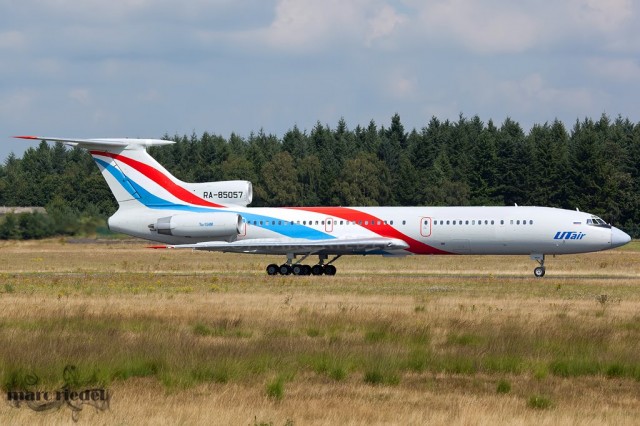
UTAir Tupolev Tu-154M RA-85057 arriving at Niederrhein Weeze Airport from Moscow Vnukovo, bringing in the soccer team of Anzhi Makhachkala for their match on Thursday Evening (9 August 2012, 8:00pm) against Vitesse Arnhem. Image by Marc Riedel.
Seeing a Tupolev TU-154 out in the wild is becoming a rare treat. Luckily, UTair still operates two Tu-154Ms, one in a striking blue and red livery.
UTair was founded in 1967 and is based at Khanty-Mansiysk Airport (HMA) in Russia. Originally the airline was part of the Aeroflot family and was renamed TAT after the break up of the USSR. Then, in 2003, the airline was again re-named to UTair.
The airline offers scheduled service to about 70 domestic and international destinations. UTair operates a diverse fleet of over 100 aircraft and 300 helicopters. They are in the process of updating their older aircraft with 20 Airbus A321s, 30 Boeing 737-800s and 24 Sukhoi SUperjet 100s on order.
This is a special livery seen on RA-85057. The livery has been with Samara Airlines and then South East Airlines before remaining with UTair. UTair’s standard livery is not nearly as colorful and a bit bland, so hopefully they keep the red white and blue flying until retiring the aircraft from their fleet.
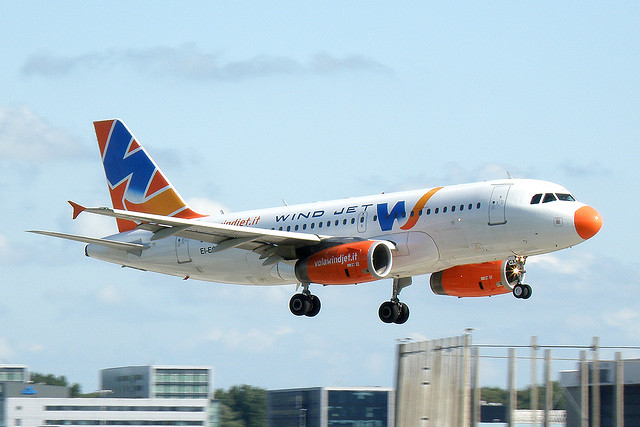
A Wind Jet Airbus A319. Image by Daniel Blok / Flickr CC.
Try not to get too attached to this Wind Jet livery — the airline ceased operations on August 11, 2012.
The Italian-based airline was founded in 2003 and operated scheduled service in Italy and to destinations in Europe, to Egypt and seasonally to Israel.
Wind Jet operated a fleet of five Airbus A319s and seven Airbus A320s in an all economy format.
In January 2012, Alitalia started the process of merging with Wind Jet. The Italian antitrust authority gave Alitialia authorization to move forward, but were told they would have to give up slots on some of their most important routes. Altalia decided to pull out of the merger and Wind Jet was not able to stay in business.
I have to say that I love this livery. The orange nose, engines and tail go well together. It is not just any livery that can pull off a white body and colored nose. Too bad it will be flying no longer.
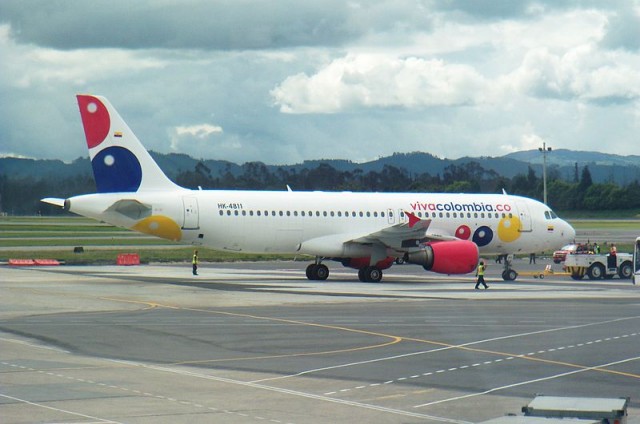
One of VivaColombia’s Airbus A320s. Image by Santiago Narayana via Wikipedia.
VivaColombia (5Z), according to their website, is “the first and only low-cost airline of Colombia.” They started in May of 2012 and operate a fleet of four Airbus A320s that service nine Colombian destinations.
They hope to grow their fleet by three additional A320s, all configured in a snug 180 seats, and expand to destinations in Central, South and North America.
The livery is simplistic and has different color balls, representing the three colors of the Colombian flag. I think the livery looks okay, but would probably look better on the shorter A319 or A318.
If the design looks familiar, probably because it is the same concept used by VivaAerobus, based in Mexico. Both airlines have some common investors, which explains the “stolen” livery design. I think it comes off better on the shorter Boeing 737-300 of VivaAerobus versus the longer A320.
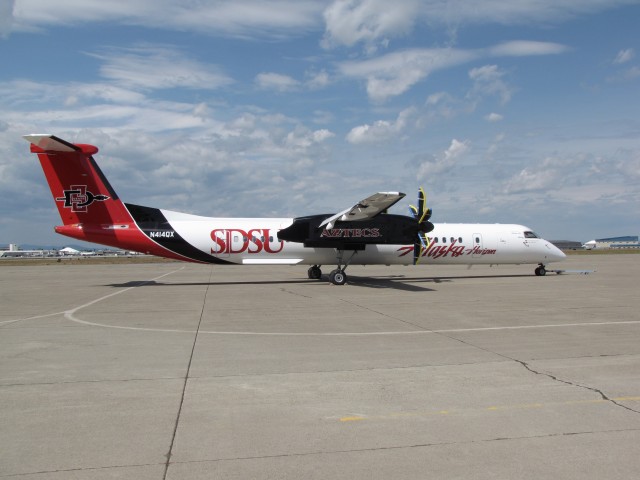
The newest livery on Horizon's Q400 is one for the San Diego State University Aztecs. Image from John David Wicker.
Horizon Air, which operates Capacity Purchase Agreement flights for sister carrier Alaska Airlines, is the eighth largest regional airline and is based in Seattle, WA. Recently, their own Horizon livery disappeared and was replaced by Alaska’s Eskimo, but the airline still retained a nice collection of unique liveries.
On May 31st, Alaska showed off their newest livery: San Diego State University at San Diego International Airport (SAN). The unveiling of the new livery was timed to celebrate the start of Alaska Airlines new San Diego flights to Fresno, Monterey and Santa Rosa, Calif., which began on June 4 and 5.
’œWe’re proud to add San Diego State University’s bold colors to our fleet of university planes and especially pleased that this aircraft represents our first California school,’ said Joe Sprague, Alaska Airlines’ vice president of marketing. ’œWe hope the Aztec plane will bring smiles to our passengers and be a source of pride for SDSU students, alumni and faculty for years to come as we fly it throughout our regional route network.’
It took a crew of eight people working around the clock for seven days at Associated Painters, located in Spokane, WA to paint the SDSU livery. The painting required 32 gallons of white paint, 10 gallons of red paint and four gallons of black paint. In addition, about 2,000 sheets of sandpaper and 10,000 yards of masking tape were also used.
Check out the gallery below for additional special Horizon/Alaska Q400 liveries:
[nggallery id=4]
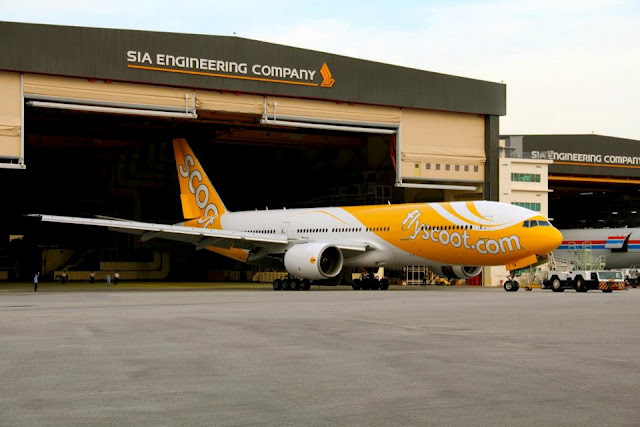
This ex-Singapore Airlines Boeing 777-200 (9V-OTA) is now painted in Scoot Airlines yellow livery. Image from Scoot.
This airline really has some Scootitude — that is their statement, not mine.
Scoot Airlines is a new low-cost airline that looks to start operations soon and is owned by parent company Singapore Airlines.
The airline currently has a fleet of two Boeing 777s, which previously flew for Singapore Airlines. The aircraft are configured in a 2-class layout with 32 ScootBiz seats in a 2-4-2 configuration and the rest in economy with a 3-4-3 configuration.
Scoot is initially planning routes from Singapore to Australia, China and Thailand. The first flight is planned for June 6, 2012 to Sydney and the rest in the following months.
This vibrant yellow livery on a Boeing 777-200 really stands out. I keep going back and forth on this one, trying to see if I like it. In some ways, I really enjoy the fact that a bright livery is on a 777, but in others, it just seems so weird, since we normally see “fun” liveries, only on smaller aircraft like the 737. What do you think?
For more images of Scoot’s livery, check out their FaceBook page.




